How the Angels could get more (yes, more) out of Ohtani
CLEVELAND - In the visiting clubhouse at Progressive Field last week, Los Angeles Angels outfielder Mike Trout performed a thought experiment that might have seemed absurd.
I asked him whether the other superstar in the clubhouse, Shohei Ohtani, the major leagues' first two-way star player since Babe Ruth, could do even more on the baseball field than he does now.
My curiosity came from examining this year's AL MVP debate. What more would Ohtani need to do to surpass Aaron Judge's candidacy? Judge, whom many view as the favorite, leads Ohtani in total FanGraphs WAR (10.7 WAR to 8.8) and Baseball Reference's version (9.9 to 8.9) of the metric.
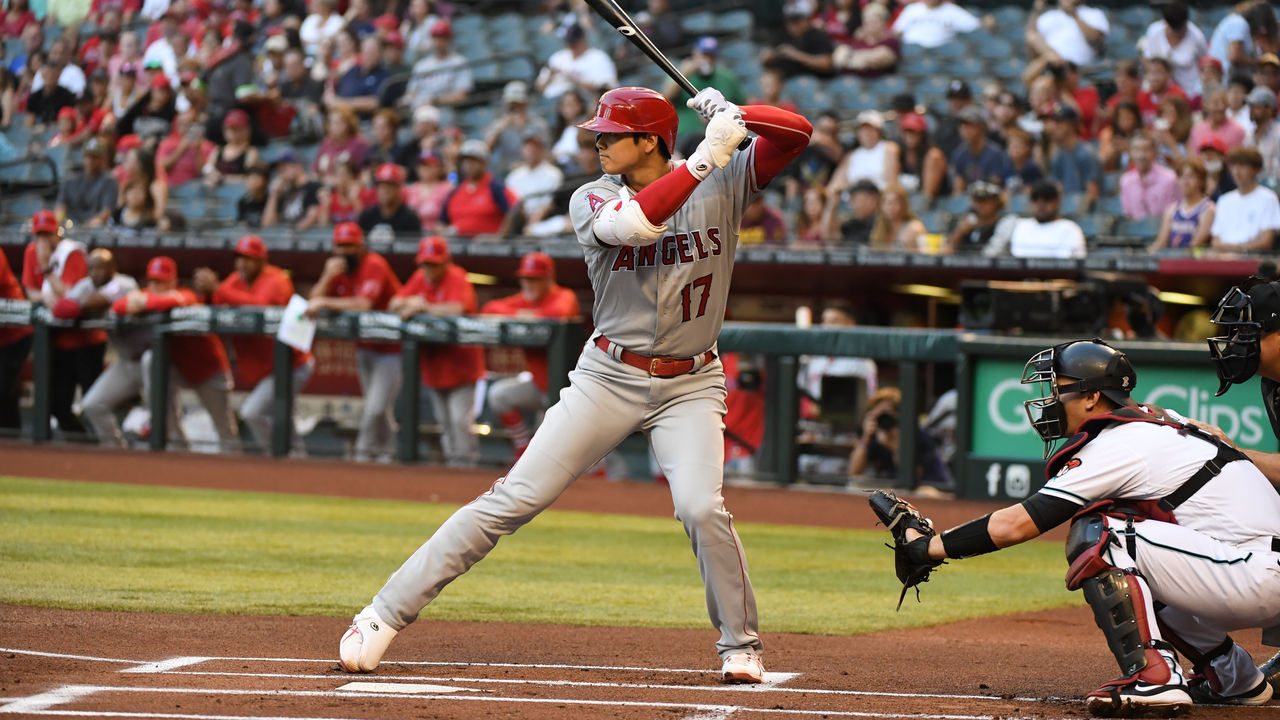
Ohtani made us rethink what is possible on the baseball field, and it's interesting to wonder if he could push those limits even further. What are those limits? After all, many thought it was a bad idea for Ohtani to consider hitting in addition to pitching before he proved it was possible in the modern game.
Through play Friday, Ohtani's made 617 plate appearances and thrown 153 innings this season. It's an incredible volume of work, to be sure, but what might a maximum amount of Ohtani look like? And how could it benefit both him and the Angels if he expanded his role without causing his performance to decline?
I asked Trout if he thought Ohtani could play in the outfield instead of DHing. I also asked if he thought it was possible for the Angels to transition to a five-man rotation.
"I think for the whole season it's too much," Trout said. "What he is doing is obviously working for him. But with Ohtani, it's crazy. If you need him to go in the outfield, he could do it. I think playing outfield and pitching every fifth day - that would be interesting."
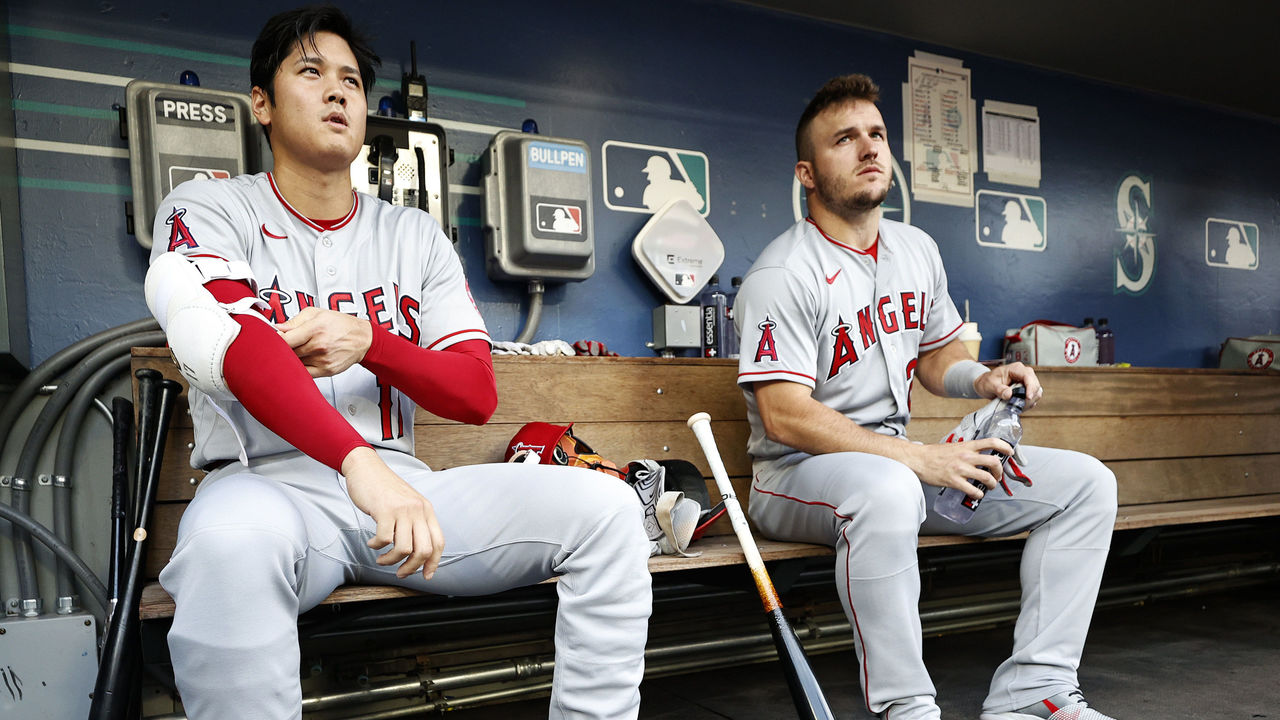
To begin exploring this, we must consider the theoretical maximum playing time a two-way player might accrue in a modern season.
Last year, four pitchers exceeded 200 innings pitched, with Zack Wheeler leading at 213 1/3. Sandy Alcantara will likely top that this year. We'll use 200 innings as a maximum innings threshold, which would require being a part of a five-man rotation. The Angels use a six-man staff to accommodate Ohtani, which is why he's tied for 48th in innings pitched.
The team didn't discuss increasing Ohtani's workload this season, but general manager Perry Minasian said in August that a five-man rotation is under consideration for next year.
"I wouldn't count anything out," Minasian told the Orange County Register's Jeff Fletcher. "I wouldn't. The more experienced (Ohtani) gets, he's well in tune with his body and what he can do and what he can't do. So I would never rule anything out."
Participation in the upcoming World Baseball Classic could further muddle his 2023 workload, but expanding his role still seems possible.
As for hitting, two hitters accumulated 700 plate appearances last season. Generally, only everyday players batting near the top of the order reach that mark.
In the field, only 13 players played more than 1,300 innings last year, and only Mariners shortstop J.P. Crawford exceeded 1,400 innings (1,412). Since Ohtani cannot play in the field when he's starting games on the mound, his max position-playing availability is around 1,150 innings.
How close is Ohtani to maximum player usage?
As a hitter batting atop the Angels' lineup, he's pretty close. He's projected to finish with 663 plate appearances, slightly above his mark of 648 last season. That projection is 94.5% of the way to a maximum level of plate appearances.
Ohtani the pitcher is on pace for 160 innings, which would be a career high, and 80% of the way to a 200-inning workload.
He lags the most versus his potential usage when it comes to fielding. He hasn't played a defensive position other than pitcher this season and has never tried playing in the field regularly with the Angels. But it would offer some sneaky opportunities to add value.
One of those opportunities is linked to what's called the "DH penalty."
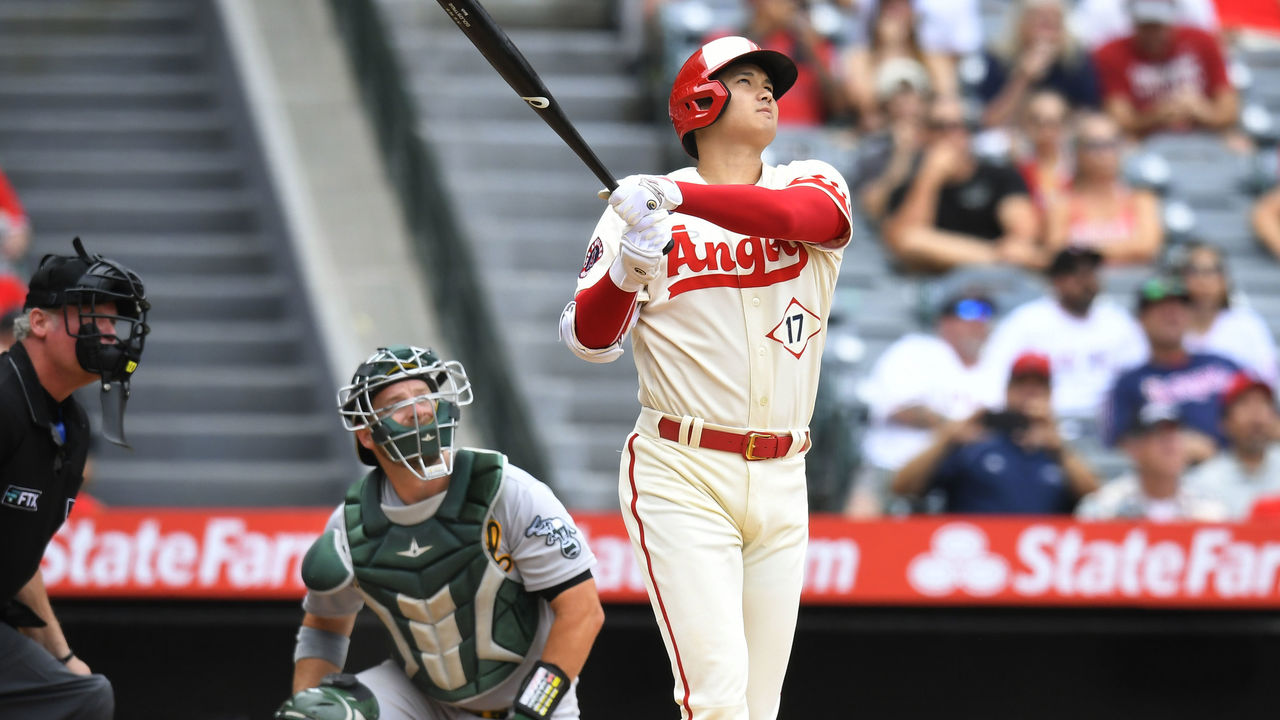
In "The Book: Playing the Percentages in Baseball," authors Tom Tango, Mitchel Lichtman, and Andrew Dolphin found that hitters perform worse at the plate when they DH compared to playing in the field. They found the penalty was 14 points worth of wOBA, which means batters were about 4% less effective when DHing.
There are some different theories for why this might happen. Designated hitters could be more likely to be dealing with an injury, or perhaps something about the physical act of sitting or not being in the game slightly reduces offensive performance.
Trout suggested there's also a psychological cost to being less involved in the action.
"(As a DH), you hit, and you sit down and start thinking about stuff," Trout said. "If you're in the field, you make a great play, and get your mind off hitting."
That means Ohtani might be an even more effective hitter if he was in an outfield spot regularly. That could push him from, say, a 3.8-WAR hitter this year to beyond 4.0 WAR.
Then there is the matter of WAR accounting, which is key in free-agent valuations and in MVP races as more and more voters use the metric to guide their decisions.
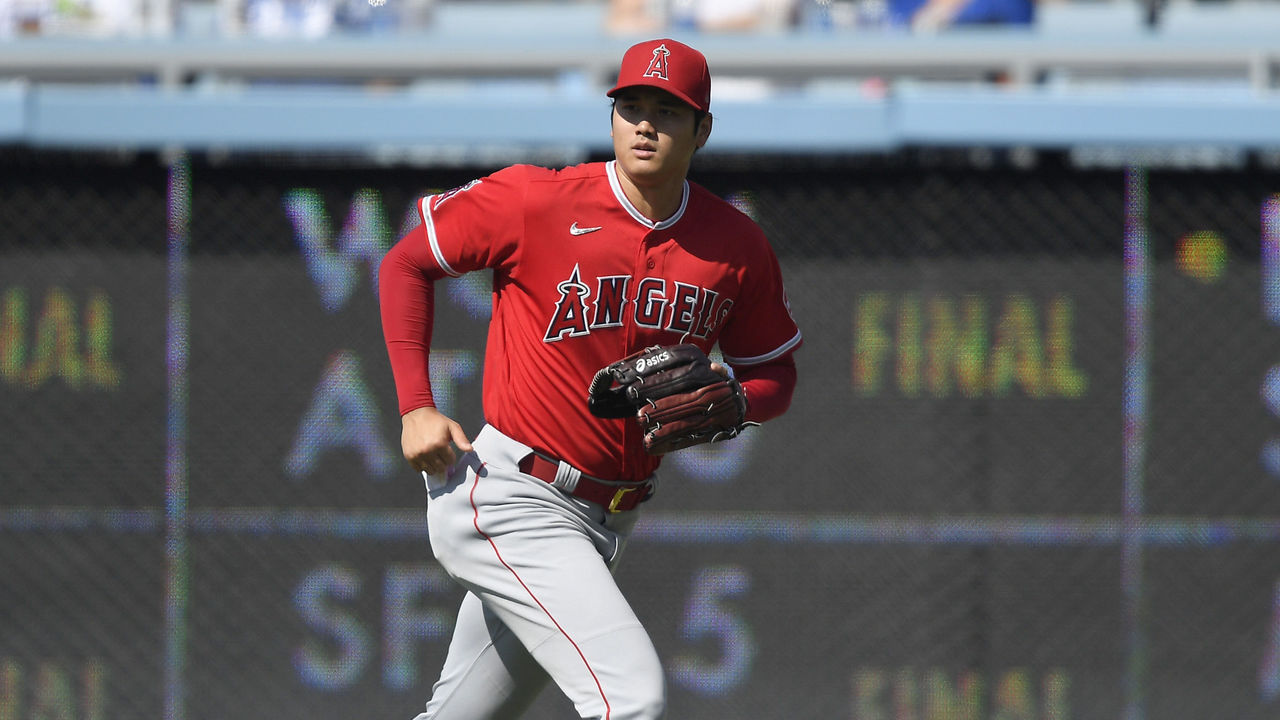
In FanGraphs' WAR formula, the DH receives a positional adjustment value of minus-17.5 runs for a full season. A corner outfield spot receives a full-season position adjustment value of minus-7.5 runs for a full season. A win is equal to about 10 runs. If Ohtani swapped his DH time for outfield time and was just league average in a corner spot, Ohtani would get a 0.8 WAR bump based upon 1,150 innings in the field.
Combined with shedding the DH penalty, that could hypothetically add a full win to his WAR total and perhaps lift him ahead of Judge in the WAR standings.
Trout thinks Ohtani could be an above-average outfielder if set there regularly.
Angels pitching coach Matt Wise joked: "If you told him to go behind the plate and catch, he could probably do that, too."
Angels hitting coach Jeremy Reed agrees that Ohtani could handle the outfield as well, noting that Ohtani played there last year to keep him in games he started on the mound before the "Ohtani Rule" was introduced. In a small sample of 8 1/3 innings, the advanced fielding metrics I consulted rated him as neutral to slightly above average. Ohtani also played in the outfield for the Nippon-Ham Fighters in Japan.
But Reed can't envision Ohtani's workload growing.
"What's on Shohei's plate right now is something we haven't seen before," Reed said.
Maybe Ohtani is already operating at the limit. At the major-league level, he's largely in uncharted territory, especially in his era.
(For decades after Ruth, hundreds of minor leaguers were employed as two-way players. In the 1950s, 253 minor-league players threw at least 50 innings in a season and reached 300 plate appearances, according to Baseball Reference data. But the two-way player in professional baseball was largely extinct by the mid-1960s.)
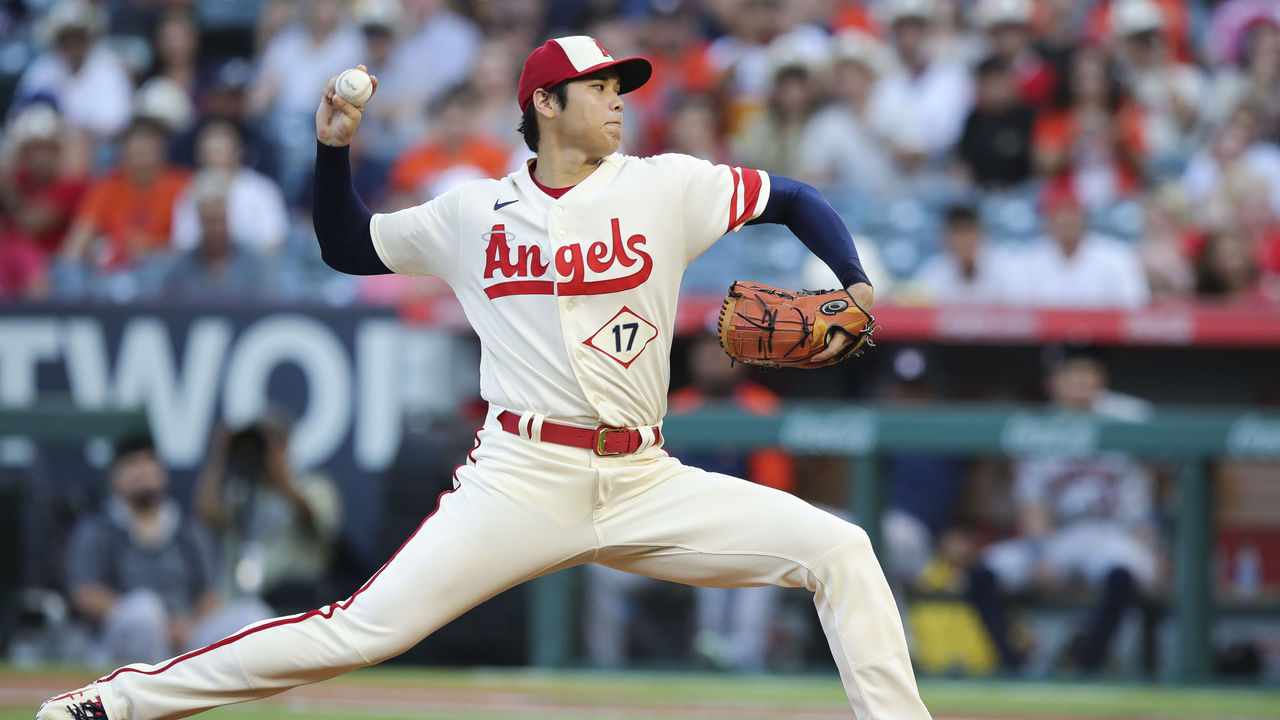
Beyond the field, Ohtani could hypothetically work more as a pitcher, too.
He's in his second year of using a training regimen he adopted from Driveline Baseball - the suburban Seattle training facility he visited after the 2020 season - including weighted-ball and plyoball routines. He also throws a single 25-pitch bullpen between starts.
"With everything he does, there is a thought behind it," Wise said. "We are very regimented in how he prepares himself every day. ... Last year was the first year he used (Driveline's) system and he won an MVP."
Ohtani is also another season removed from his 2018 Tommy John surgery and he's thrown 30 more innings this season than he did last year. From velocity to performance, there are no signs he's slowing down. Thus far in September, he's posted his lowest ERA, FIP, and opponent wOBA of the season. His average fastball velocity of 97.9 mph in September is the second-highest of his MLB career, trailing only July 2022 (98.1).
A similar innings jump next season would put him near 200. Extrapolating Ohtani's performance on the mound over 200 innings this season would equate to a 6.8-WAR campaign, which would lead the majors by almost one full win.
If Ohtani could adapt to a five-man rotation, it would be a great help to the Angels, who could avoid trotting out a sixth starter such as Michael Lorenzen or Tucker Davidson. With one of the poorest draft-and-development track records in MLB, the Angels are not exactly suited to extend and stretch a roster.
To summarize: If we witnessed maximum-use Ohtani this year, he'd gain about 3.0 WAR through all this added work, and finish with perhaps around 12 WAR, challenging for one of the greatest seasons of all time.
That's the kind of season that could help the Angels, along with a healthy Trout, in the wild-card picture. It's the kind of volume that could make him an overwhelming MVP pick. It's the kind of year that would create even more mayhem for his services in the free-agent market next winter. That is, if Ohtani, or any human being, could handle it.
Travis Sawchik is theScore's senior baseball writer.